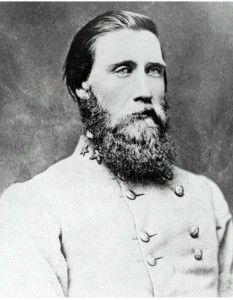With the coming of the new year, America has come upon the sesquicentennial of 1864, the bloodiest year of its civil war. Many historians consider ’64 the beginning of the end for the Confederacy in the storytelling of America’s most fatal struggle. In 1861, the war was young and so at heart were the men who fought it. The people of both North and South thought it would be a quick war, all won by a single glorious victory, and all the boys would

The beautiful war that was not to be – the 7th New York State Militia marches down Broadway in April,1861
come marching home to parades on warm, sunny days as their sweethearts hold them arm in arm. 1862 killed that notion. ’62 brought America’s young and inexperienced warriors into horrific combat on the banks of the Mississippi at Shiloh, Tennessee, brutal killing on the banks of Antietam Creek in Maryland, and ruthless struggle at Fredericksburg, Virginia. 1863 sent men through the hell that now comes to mind when one hears the names “Chancellorsville,” “Gettysburg,” and “Chickamauga.” By 1864, the men in blue and gray had marched to hell and back. They all had seen men die, seen their friends perish right in front of them. They all had been fighting in a war they were not certain they would see the end of. In the memory of those who know the story of the war, 1864 echoes with a solemn darkness, like the closing of a cemetery’s wrought iron gate on a late autumn day.
This May will be the 150th anniversary of the day an ancestor of mine descended into the war’s most terrifying battle and lived to tell the tale. Pvt. Jeremiah Stailey, an uncle on my

The reality of war – Skeletal remains of lost soldiers in the darkness of the Wilderness, 1864
mother’s side, was a Federal soldier with the 7th Pennsylvania Reserves. He had seen battle in numerous actions earlier in the war, and was wounded in America’s bloodiest single day at the Battle of Antietam in 1862. In 1864, he would see the side of war that the hand-printed lithographs and parlor paintings didn’t show. He and his regiment entered battle in Virginia’s “Wilderness” on May 5, 1864. The Wilderness is a massive forest in the backcountry of Spotsylvania County, a confused and tangled mass of undergrowth gathered at the ankles of old and gnarled trees spread out over 70 square miles. The disastrous Battle of Chancellorsville had been fought within the forest the previous year, and the the moldered remains of the fallen remained unburied throughout the underbrush. It was almost like the setting of some psychological horror movie. By fate, the armies of Generals Lee and Grant met there in sudden combat. At a crossroads of lost and meandering roads in the ancient forest, 160,000 men slammed together in a crash of fire and lead. Lines of men threw themselves into the tangled briars

Richmond’s Libby Prison – Jeremiah Stailey’s personal hell for over a year
and brush as bullets hailed all around them. Gunfire set the dry underbrush aflame, sending massive forest fires across the Wilderness, roasting the wounded alive in many cases. In the middle of all this hell, the 7th Pennsylvania Reserves plunged headlong into the fire, blazing away at the enemy as darkness fell upon the battlefield. In the confusion, the 7th became surrounded by the enemy and was forced to surrender. Jeremiah Stailey was taken prisoner and sent to Libby Prison in Richmond, Virginia, where he endured abuse by the guards, starvation, and disease. The experience of captivity left him effectively crippled for life. Pvt. Stailey served through some of the most fearful engagements of the war and saw things that even a historian would find difficulty describing. It was in the year 1864, 150 years ago, that he saw the worst of it.






